Discrete Mathematics for Pre-College Students
The Discrete Mathematics Pre-Collegiate curriculum was developed by a team of teachers, mathematicians, and mathematics educators at the Center for Research in Mathematics and Science Education (CRMSE) at San Diego State University. The curriculum includes 6 units, and for each unit we have produced a student text as well as accompanying teacher materials. These materials provide an accessible introduction to topics that are at the heart of discrete mathematics. Additionally, these materials were designed to enable teachers of twelfth-grade mathematics courses to engage their students in developing mathematical habits of mind.
Planarity
How can analyzing the properties of graphs lead to insights about geometry and topology? Key topics in this chapter include the Euler characteristic, planarity, and the colorability of graphs. Note: Planarity assumes students have experienced ideas from Connectivity.
Sample lesson: Gabriela’s Doodles
Iteration and Recursion
How can observing repeated processes lead to powerful generalizations? In this unit, students examine recursive and iterative processes and use algebraic reasoning to make sense of these processes. Key problems include the Tower of Hanoi and the Fibonacci spiral.
Sample lesson: Tower of Hanoi
Combinatorial Game Theory
How can you identify a winning strategy in a two-player game? Can you identify similarities across games that look different? In this unit, students play and analyze two player games and develop an understanding of strategy. Simultaneously, students are pushed to explain their winning strategy and use mathematics to communicate their ideas.
Sample lesson: Thai 21
Cryptography
How can you send secret messages? If you want to read a message that has been encrypted, how long will it take you to decode the message? This unit presents an introduction to the topic of cryptography and develops concepts related to doing and undoing in the context of encrypting and decrypting messages.
Sample lesson: ngMaki It Dciuflfti to daeR
Counting
How do we count large sets systematically? This unit develops concepts from combinatorics. These ideas can be learned at the start of the course, or this unit can be taught near the end of the course to formalize counting methods students develop intuitively in other units.
If these samples have sparked your interest [contact us] to discuss using DMPC in your school or district.
